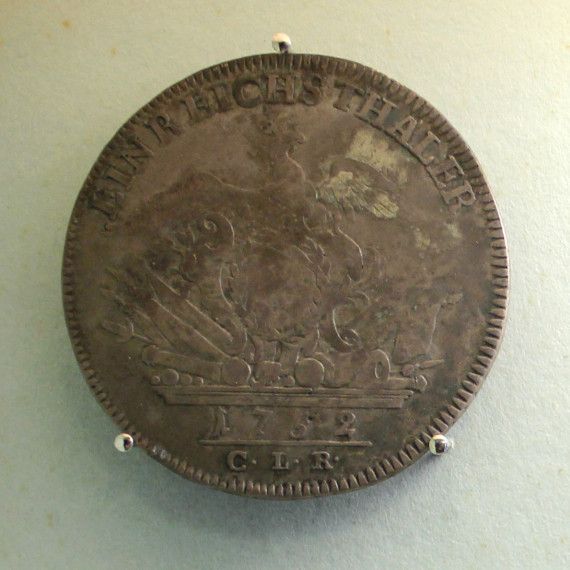Erlangen – Commerce and Industry
 Coins used in the principality of Brandenburg-Bayreuth, 18th century
Coins used in the principality of Brandenburg-Bayreuth, 18th century
As was the case in Nuremberg, the Rhenish currency was legal tender in Erlangen's New Town. Its unit was the guilder, a 'coin of account' that was never actually minted: 1 guilder = 60 kreutzer = 240 pennies. Numerous different types of coin were in circulation, including some whose value fluctuated.
The promotion of commerce and industry was Margrave Christian Ernst of Brandenburg-Bayreuth's main motive for welcoming refugiés (refugees) to his economically backward principality. With Margravial support and on the basis of Privileges granted, which included an exemption from the guild system, the Huguenots succeeded in introducing to 'Neu-Erlang' ('New-Erlangen') hitherto unknown trades, modern production techniques, and new forms of organisation such as manufacture and the putting-out system.
Erlangen's reputation as a 'factory town' – in its 18th-century sense of 'manufacture' – was based mainly on export industries that were able to assert themselves beyond regional markets on account of superior technology and refined craftsmanship.
These included hosiery, hat manufacture, glovemaking, and white leather tawing, as well as tapestry manufacture (which was, however, limited to a single company). Apart from these typically 'Huguenot' trades, the cotton printing industry alone, founded around 1750, attained great significance, which it maintained for five decades.
All these trades and industries had their heyday during the 18th century. With the turmoil of war from 1792 onwards and beginning industrialisation, Erlangen's obsolete economic structure experienced a severe crisis; because of their backwardness, the old trades disintegrated or gradually became irrelevant, until they had disappeared completely. Only glovemaking kept holding on until after the Second World War.
< Previous chapter | Next chapter >
